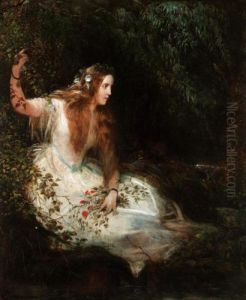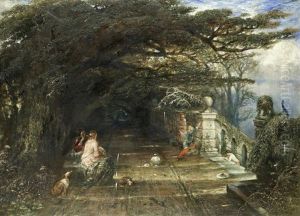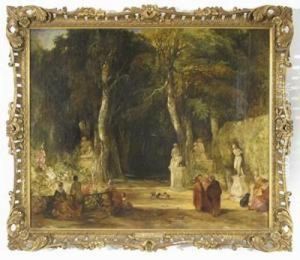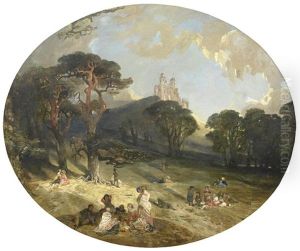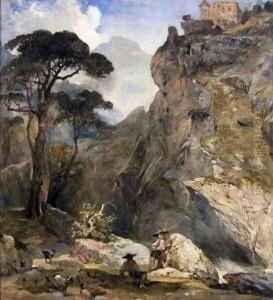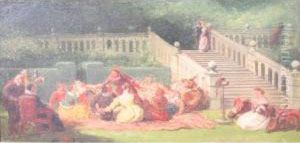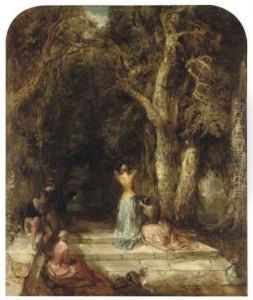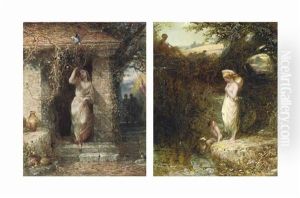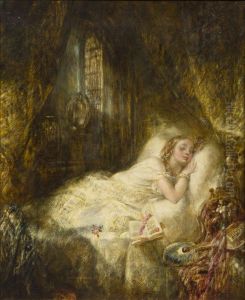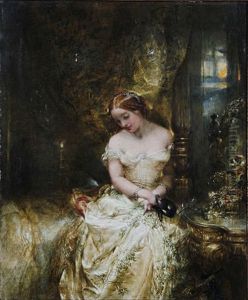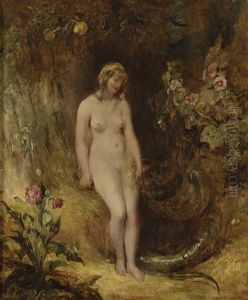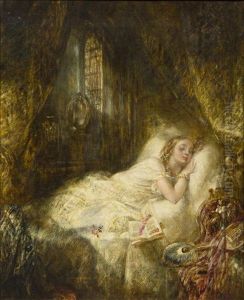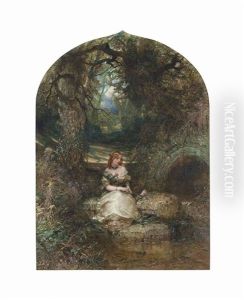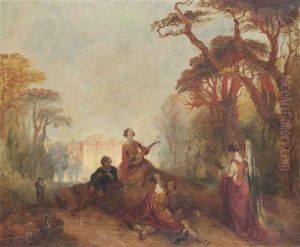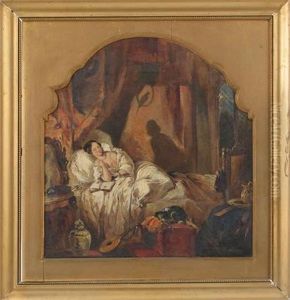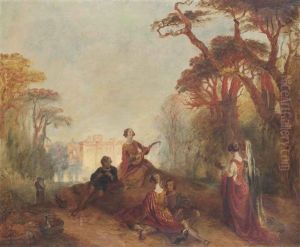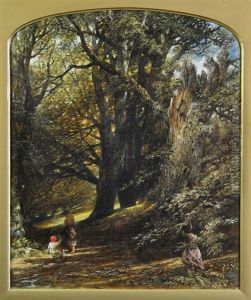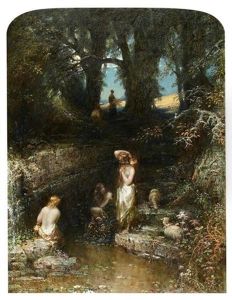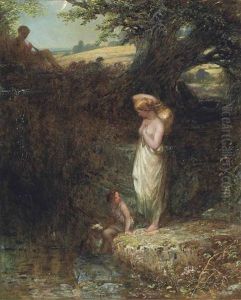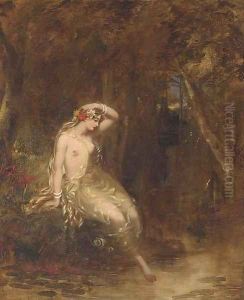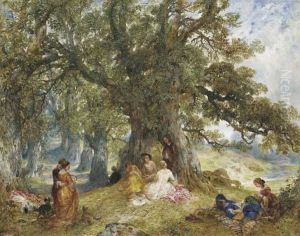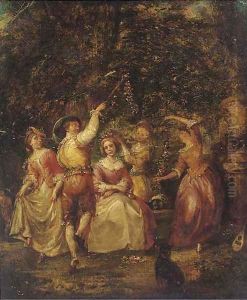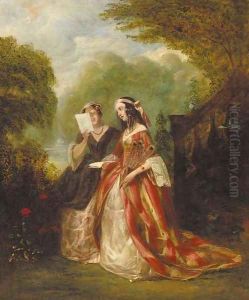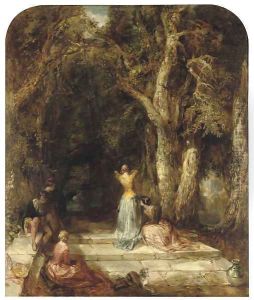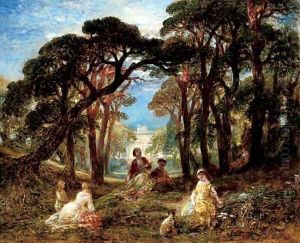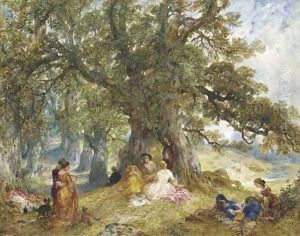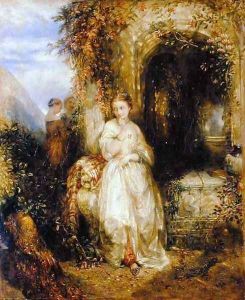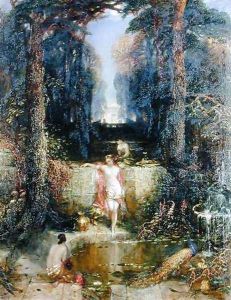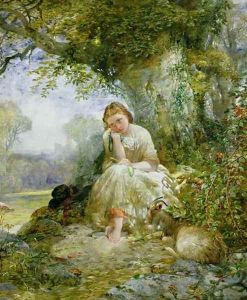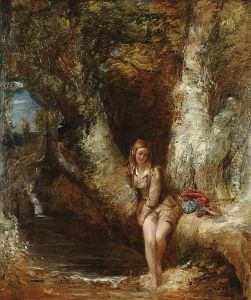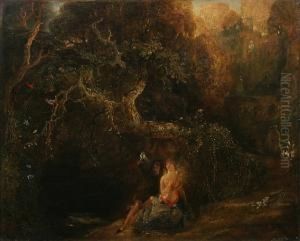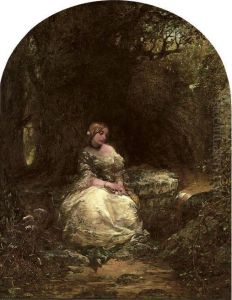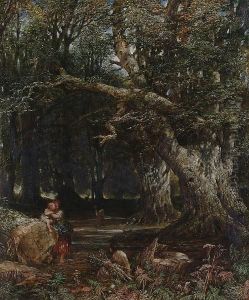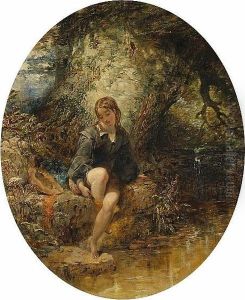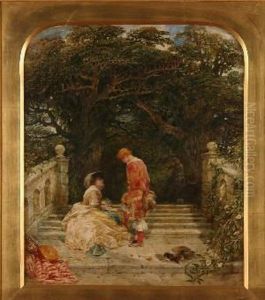Alfred Woolmer Paintings
Alfred Joseph Woolmer was an English painter born in 1805, recognized for his contributions to Victorian art, particularly in the genres of landscape and historical paintings. Though not as widely celebrated as some of his contemporaries, Woolmer carved out a unique space in the 19th-century art world with his distinctive style and approach to subject matter. He was a versatile artist, dabbling in both oil and watercolor mediums, and his works often exhibit a keen attention to detail and a profound appreciation for the natural world.
Woolmer's early life was steeped in artistic influence, and he quickly developed a passion for painting. His education in art was thorough, studying under notable figures of his time, which honed his skills and deepened his understanding of artistic principles. He became a member of the Royal Academy, where he frequently exhibited his works, gaining recognition and acclaim. His landscapes and historical scenes were particularly admired for their vibrant coloration and intricate compositions, which captured the imagination of the Victorian public.
Throughout his career, Woolmer remained an active participant in the bustling art scene of the 19th century. Besides the Royal Academy, he also exhibited at the British Institution and the Society of British Artists, among others, showcasing his versatility and adaptability to the evolving tastes of art enthusiasts and critics alike. His works reflect a romantic sensibility, often imbued with a sense of nostalgia and a deep reverence for beauty, both in the natural and the human-made world.
Despite his successes, Alfred Woolmer has not remained a household name in the annals of art history. However, his contributions to Victorian art have been reevaluated by modern scholars, who recognize his skill in capturing the essence of his era through his paintings. Woolmer's dedication to his craft and his ability to evoke emotion and narrative through his art continue to be appreciated by those who seek to understand the complexities and nuances of 19th-century British art.
Alfred Woolmer passed away in 1892, leaving behind a legacy that, while perhaps not as celebrated as that of some of his peers, is nonetheless significant for its contribution to the Victorian art landscape. His works can be found in various collections and museums, serving as a testament to his skill and vision as an artist.

